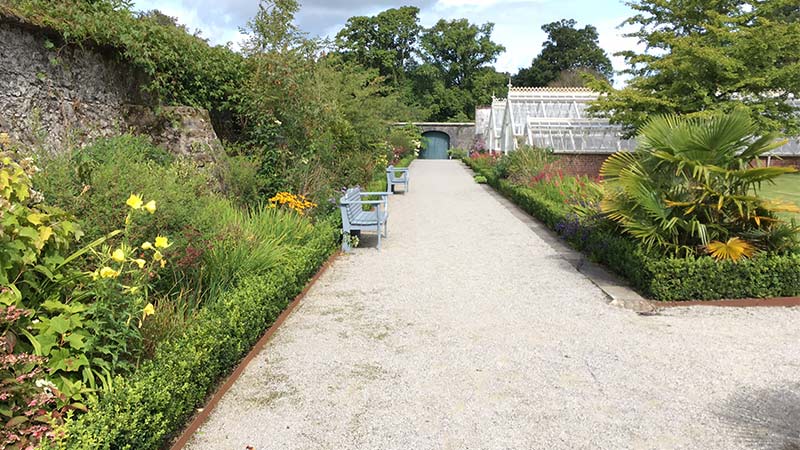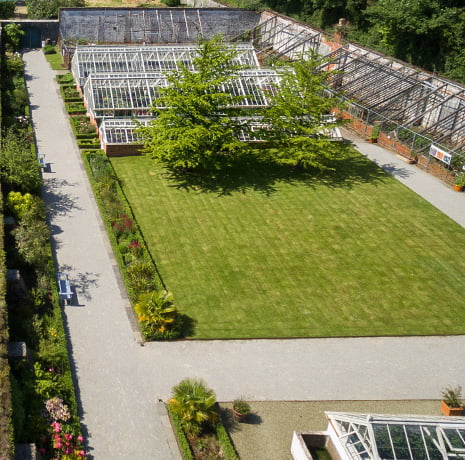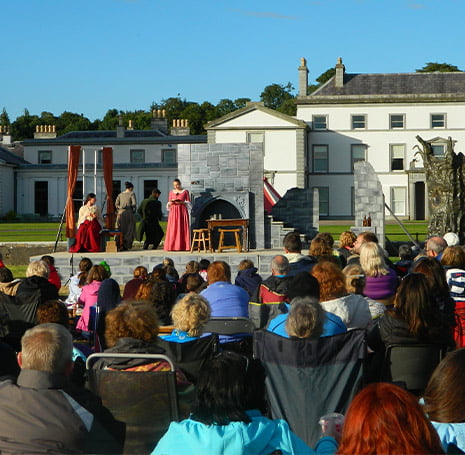Visit Fota House to experience the opulence of its gorgeous interiors and learn about the lives once lived in this Regency mansion, above and below stairs!
Fota House boasts over 70 rooms. Each elegant space features fascinating details that reveal the skill and craftsmanship that went into its building. See how Ireland’s richest families once lived in splendour
Take a tour of the mansion to take in its superb neoclassical interiors. Discover the grand décor of the principal rooms and gain insight into he workings of this historic East Cork mansion

Take a Guided Tour of Fota House
- Relish the atmosphere in Fota House’s grandest rooms and servants’ quarters, as our guides share tales about the Smith-Barry family and their staff.
- Enjoy collections of art and objects displayed in the settings they were designed to adorn.
- Visit Fota’s sensitively refurbished nursery, where children’s toys and original furniture recreate scenes from a privileged Victorian childhood.
Did You Know?
Our collection of landscape paintings is one of the finest outside the National Gallery of Ireland. It includes works by William Ashford, Robert Carver, Jonathan Fisher, and Thomas Roberts.


Fota House’s Servants’ Wing
Discover Fota House’s vast servants’ wing. Learn what life was like for the cooks, butlers, footmen, and maids who worked for the Smith-Barry family.
- See the contrast between the public areas and servants’ quarters. See what life was like for those who worked here.
- Explore life below stairs with our collection. See how the servants worked, lived, and played on the estate.
- Walk in the footsteps of countless servants of all stripes and hear their stories on one of our guided tours.
The History of Fota House
Until the 1820s, Fota was home to a two-storey hunting lodge, used as a base for fishing, shooting, and exploring Cork Harbour. The entire estate was owned by the descendants of Philip de Barry, who had been granted ownership of Fota Island after his participation in the Norman invasion of Ireland in the 1160s and ’70s.
When Fota House became home to the Smith-Barry family in the 1820s, it was remodelled to fit their ambitions and show their power.
Renowned Irish architects Sir Richard Morrison and his son William Vitruvious Morrison drew up plans for an opulent mansion, fitting John Smith-Barry’s ambition and standing in Irish society
The complex role Fota House played in local lives is explored through our tours and events. Our dedicated staff and volunteers will bring it to life as you wander through the Arboretum, Gardens, and House.
Take some time to experience the beauty of the grounds and learn more about the unique natural environment of Fota Island.
Did You Know?
You can visit the award-winning Victorian Working Garden, which has been brought back to life. It includes a beautiful orchard, put houses, and working glasshouses.
It once supplied the house with fruit and vegetables and is now filled with activity once again. Volunteers are propagating and growing produce, which you can buy to support our work.

Restoration and Care
Fota House, Arboretum & Gardens is managed and cared for by the Irish Heritage Trust – a non-profit organisation which conserves the house and makes it available for the enjoyment of all.
The Irish Heritage Trust works in close partnership with the Office of Public Works, Fáilte Ireland, and other organisations, as well as corporate partners. The funds we generate from your visit, the coffee you buy at the Café, and the event tickets you sign up for, all support the important work of caring for and maintaining Fota House, Arboretum & Gardens.








